Browse Primary Sources
Locate primary sources, including images, objects, media, and texts. Annotations by scholars contextualize sources.
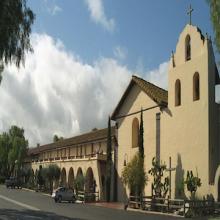
Misión Santa Inés
Founded in 1804, the Santa Inés Mission was a church complex designed to convert the local native communities to Catholicism and teach them Spanish ways of living and working. By the time of its establishment, there were already eighteen other missions in California alone, in addition to the dozens of others throughout the modern-day US Southwest.
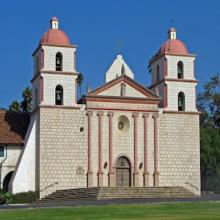
Old Mission Santa Barbara
This historic church complex belonged to Spain’s network of missions throughout not only California, but also across the region that today makes up the US-Mexico border. It was established in 1786 and named to honor the specific day of its founding (December 4th), which is dedicated to the Feast of Santa Barbara. By this time, California already had nine other missions in operation.
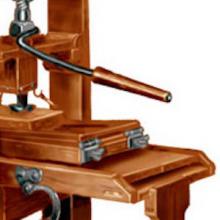
Printing Press
This 1750 wooden printing press is quite similar to the earliest ones invented in Europe in the mid-15th century, which revolutionized communication through the rapid increase and accessibility of information. Print began with individual metal letters placed by hand in special grids. The letters were inked and then paper was pressed on one sheet at a time.
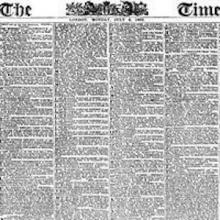
London Newspaper
This source represents both the power and importance of context when reading local sources and how the speed of information has changed drastically over time. This is the front page of the Times of London, one of the most complete and accurate newspapers in the world in the mid-1800s, on the morning after the Battle of Gettysburg in Pennsylvania, a major historical event.

Posada Broadsheet
This broadsheet was made my Mexican printer Jose Guadlupe Posada in 1903. The broadsheet itself was called Calavera oaxaqueña, of "the skull from Oaxaca," in reference to the rural city it was published for. The broadsheet also depicts Posada's popular use of the images of skulls and crossbones, in addition to his use of print in general, as a political and cultural critique.
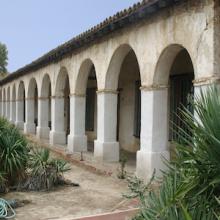
Misión San Miguel (California)
The San Miguel California Mission was founded in 1797 by a Franciscan friar who was operating on orders from the Spanish Crown. Its namesake originates from the dedication of the complex to the Archangel Saint Michael.
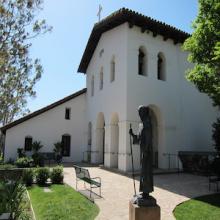
Misión San Luis Obispo de Tolosa
This historic church was founded in 1772 by Spanish friars. Spain established dozens of churches throughout the US-Southwest region during the seventeenth and eighteenth century in an effort to convert the native peoples who lived there to Catholicism. These missions also helped the Crown stake its claim over the territory which was otherwise sparsely populated.
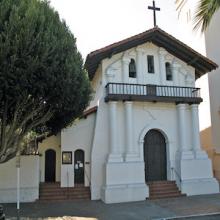
Misión San Francisco de Asís (California)
Located near the modern-day city of San Francisco, California, this historic church was established by Spanish friars in 1776. It is also known as the Mission Dolores. Its cemetery, which houses the burial sites of indigneous individuals who lived, worked, and worshipped at this complex, remains largely intact from the eighteenth century.

Old Mission San Luis Rey de Francia
Founded in 1798, this church belonged to the extensive network of Spanish colonial missions not only in California, but along much of the US-Mexico border. Through the eighteenth century, this region operated as the frontier zone between territories claimed by Spain, France, Britain, and indigenous groups.
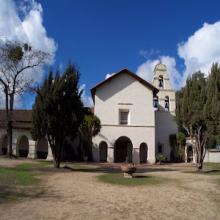
Old Mission San Juan Bautista
This historic church once belonged to Spain’s extensive network of religious institutions along the US-Mexico border. The Mission San Juan Bautista was founded in 1797, making it the fifteenth church established in modern-day California. The name of the church originates in its founding day, which was dedicated to the feast day for Saint John the Baptist.

Misión San Juan Capistrano (California)
Throughout the eighteenth century, Spanish friars established more than twenty Spanish colonial churches across the territory that comprises the modern-day state of California. This one, named the Mission San Juan Capistrano, was founded in 1776. These institutions aimed to convert the local peoples (the Acjachemen) to Christianity and teach them Spanish ways of living and working.

Misión Basilica San Diego de Alcalá
Throughout the eighteenth century, the Spanish Crown authorized the establishment of more than twenty churches across the area that comprises the state of California today. These institutions, along with the dozens of other churches already founded throughout the US-Southwest region, aimed to evangelize the native peoples. This complex targeted the nearby Kumeyaay peoples.
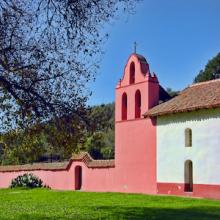
Misión La Purísima Concepción De María Santísima
The Purísima Concepción Mission was founded in 1787 as part of a larger network of Spanish colonial churches throughout the region. By this time, ten other missions had been established in modern-day California, in addition to the dozens of others across the territory that today comprises the US-Mexico border.
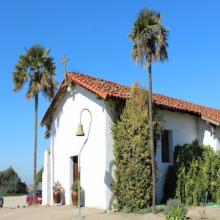
Misión Nuestro Señora de la Soledad
Established in 1791, the Mission of Nuestro Señora de la Soledad was a Spanish colonial church in the frontier region of Spain’s empire in North America. By the time of its founding, twelve other similar institutions already existed throughout modern-day California, in addition to the dozens of churches across the US Southwest.
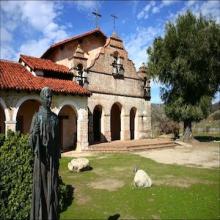
Misión San Antonio de Padua
The Mission of San Antonio de Padua was the third church established by Spanish friars in the territory that today comprises the state of California. Founded in 1771, this complex aimed to house the church authorities and evangelize the local native communities. Indigenous labor built the sanctuary and its supporting buildings, such as workshops and a granary.

Misión San Carlos Borromeo del Rio Carmelo
Throughout the seventeenth and eighteenth centuries, the Spanish Crown granted its missionaries permission to establish dozens of missions throughout the modern-day US Southwest. During this period, this region was the borderlands between Spain’s territory and those claimed by the British, French, and indigenous groups.
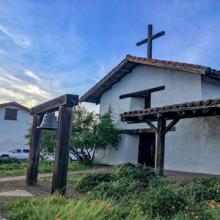
Misión San Francisco de Solano
Located in Southern California, the Mission San Francisco de Solano once operated as a Spanish colonial church. It was founded in 1823 and originally featured living quarters in addition to the sanctuary. Missions like this one were established to evangelize the native communities in the area. The Spanish monarchs approved the creation of dozens of missions throughout the borderlands region.

Misión San Fernando Rey de España
Throughout the seventeenth century and eighteenth centuries, the Spanish Crown approved the establishment of dozens of churches throughout the region that today comprises the US-Mexico border. During the period, this territory was the frontier zone for Spain, at the northern edge of its American colonies.
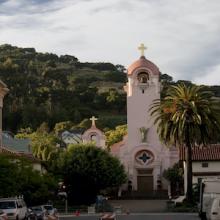
Misión San Rafael Arcángel
Located near San Francisco, California, this mission originally functioned as a hospital. It was a secondary site for a larger mission closer to San Francisco. It was founded later than many of the colonial churches throughout the US Southwest, in 1817. These churches were built as part of the Spanish Crown’s efforts to evangelize the native peoples of the Americas.
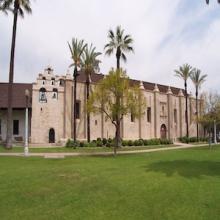
Misión San Gabriel Arcángel
Founded in 1771, the San Gabriel Arcángel Mission joined a large network of Spanish colonial churches throughout the territory that today comprises the Southwest United States. The Crown had granted the church permission to not only establish sanctuaries, but also to supervise local settlements in the hopes of converting the local peoples to Catholicisim.